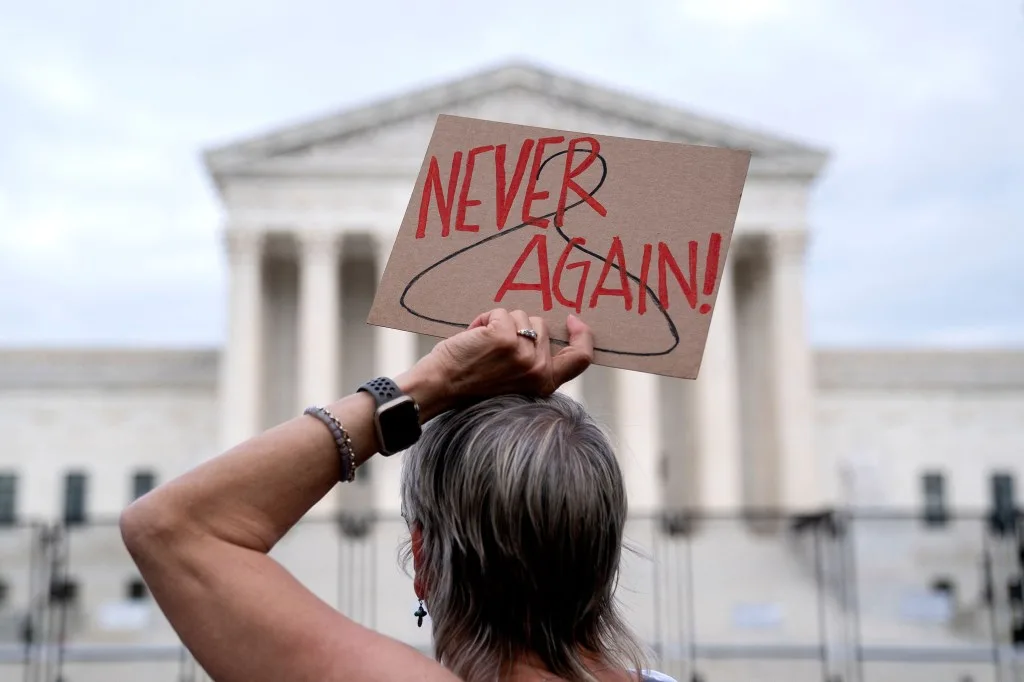
What drove voters to the polls in Ohio wasn’t politics or partisanship — it was values. More and more people today are motivated not by party loyalty but by the issues they care about and the threats they see to their most basic rights.
Ohio saw that the right to control your own health choices and bodily autonomy is clear, conspicuous and easily understood.
That’s why Issue 1, which would have made it harder to enshrine abortion rights into the Ohio Constitution, was overwhelmingly defeated, just as other anti-abortion ballot initiatives were voted down in red and purple states such as Michigan, Kentucky and Kansas in 2022.
And that’s why today, the forces and factors that went into the shocking victory in Ohio for abortion rights are poised to play a decisive role in the 2024 elections.
Ohio voters from across the political spectrum recognized that abortion bans have nothing to do with women’s health and everything to do with the power that some politicians want to retain over women’s lives, their futures and their bodily autonomy.
No one wants to live in that kind of society — or see their daughters, granddaughters, nieces and loved ones have to grow up under those conditions.
Voters turned out in record numbers, with 57% voting against the measure, a victory margin of almost 430,000 votes out of more than 3 million cast. Even Ohioans who hadn’t voted in 2022 came out in the summer heat to stand up for their rights and values.
According to Democratic pollster Celinda Lake, “In the early vote alone, there were 30,000 voters who voted in (the) election that hadn’t voted in 2022, and they were largely women and African-American women.”
The test for 2024 is whether those voters will stay engaged in Ohio and across the country. I believe they will.
There’s tremendous energy at the grassroots level to work for the change we need to see in the priorities our lawmakers set — and the ones they ignore. In the year since the Supreme Court overturned Roe v. Wade, 14 states have made abortion illegal, and many more are considering abortion restrictions and bans that make it difficult, if not impossible, to obtain abortion care.
The Ohio vote shows the power of grassroots action, coalition building and common-sense conversations about the issues that matter.
After the results came in from Ohio, abortion rights advocates in Arizona filed a ballot measure to protect those rights in the Arizona Constitution. A 15-week abortion ban was signed into law in 2022 by then-Gov. Doug Ducey, a Republican. At the same time, those pushing for a near-total ban on abortions appealed a court ruling preventing doctors from being prosecuted under a law that’s been on the books since Arizona was a territory.
“We’re just one bad court decision away from a total abortion ban that carries prison time for doctors,” said Arizona Gov. Katie Hobbs, a Democrat who focused on abortion rights during her 2022 campaign.
The need to codify abortion rights into state law couldn’t be more precise — and the stakes in the 2024 election couldn’t be higher. Arizona is just one of a handful of battleground states that could determine the outcome of the presidential election — with a Senate race on the ballot that could determine party control.
And in Ohio, the abortion rights coalition that beat Issue 1 remains in place to make a difference in abortion-rights defender Sen. Sherrod Brown’s re-election campaign.
Abortion will be on the ballot in 2024, from the presidential campaign on down. And so will contraception: As regulatory and court decisions make over-the-counter care more available, candidates are campaigning to enact more restrictions on that access.
The political decisions being made to control women’s bodily autonomy will directly affect those who are already facing the worst discrimination and obstacles to accessing health care. States with the most restrictive abortion bans have some of the highest rates of Black maternal death — as much as 38% greater than in states without abortion restrictions.
A new coalition of values-based voters is emerging, challenging old political assumptions and building centers of strength and effectiveness. Ohio showed us what’s possible — now it’s up to us to show what’s next.
Christian F. Nunes is the president of the National Organization for Women. She wrote this for InsideSources.com.


